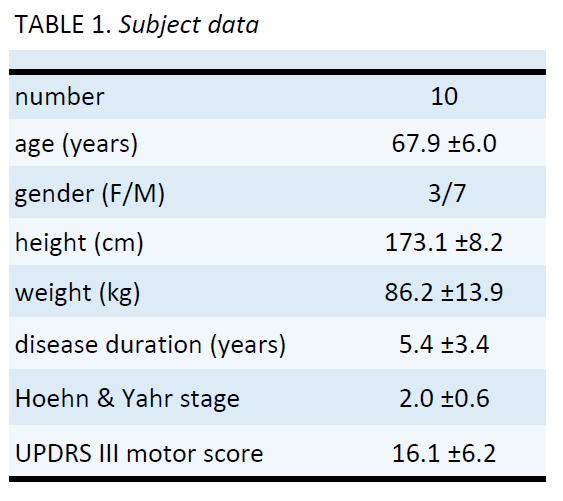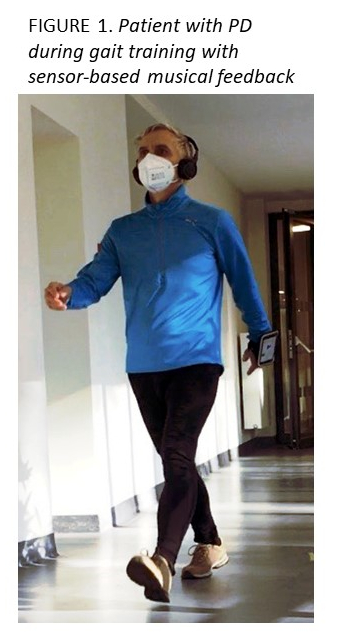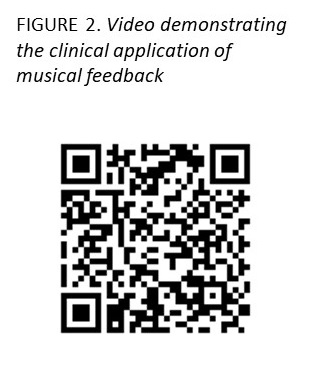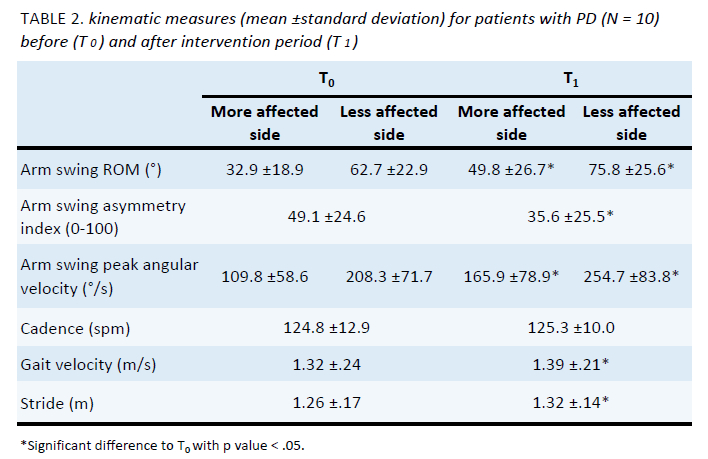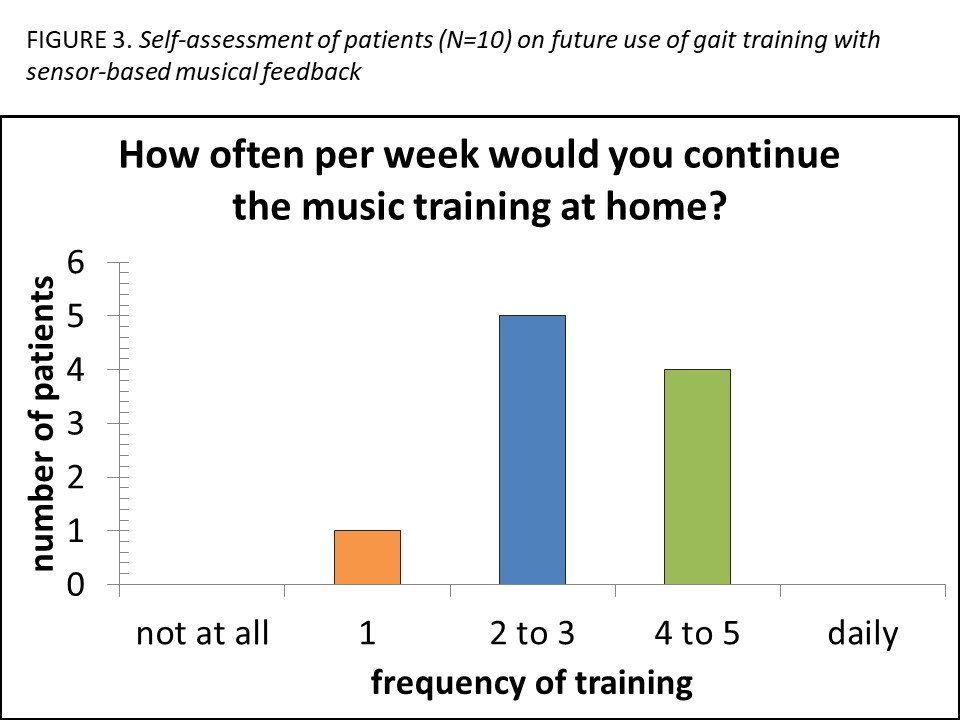Category: Parkinson’s Disease: Clinical Trials
Objective: To assess the feasibility of sensor-based music feedback (SBMF) to improve arm swing (AS) and other gait parameters in patients with PD.
Background: Reduction of AS is an early and common symptom in PD [1,2] that is associated with an increased risk of falls [3]. By using the technology of a mobile phone, AS kinematics can be converted into a closed-loop SBMF in order to improve the kinematics of gait in patients with PD [4].
Method: Ten patients with PD [table 1] with one-sided reduction of AS were recruited during multidisciplinary treatment in a hospital specialized on Parkinson’s disease. Subjects received gait training with SBMF for 5 days a week between 10 and 20 min during a mean intervention period of 13.3 (±2.2) days. Acceleration of the more affected arm was converted by an app [figure 1, 2] into a dynamic musical piece with a metrically accentuated beat [4]. Gait kinematics were obtained during a 6 min walking time test before (T0) and after (T1) the intervention period. For the normally distributed data two-tailed paired t-tests were administered to compare pre and post means. At T1 subjects were asked to rate their appreciation of the music on a 7-point Likert scale (from 1 = very much to 7 = not at all) and to decide how often they would continue the SBMF training at home.
Results: All gait measures except cadence improved significantly [table 2]. The music appreciation rating yielded a mean of 1.6 (±0.7). All ten patients were inclined to continue the music training [figure 3].
Conclusion: SBMF gait training proved to be a safe and feasible intervention for mildly impaired patients with PD. All gait measures (except cadence) including AS parameters and AS symmetry improved significantly over time. There was a high motivation and compliance to practice with the music application 5 days a week, a high appreciation of the music that was created by the AS feedback algorithm during walking and a high motivation to continue to train with the SBMF device after the stay in the hospital.
References: [1] Mirelman A, Bernad-Elazari H, Thaler A, et al. Arm swing as a potential new prodromal marker of Parkinson’s disease. Mov Disord 2016; 31(10): 1527-1534.
[2] Ospina BM, Chaparro JAV, Paredes JDA, Pino YJC, Navarro A, Orozco JL. Objective arm swing analysis in early-stage Parkinson’s disease using an RGB-D Camera (Kinect ®). J Parkinsons Dis 2018; 8(4): 563-570.
[3] Wood BH, Bilclough JA, Bowron A. Incidence and prediction of falls in Parkinson’s disease: a prospective multidisciplinary study. J Neurol Neurosurg Psychiatry 2002; 72: 721-725.
[4] Mainka, S, Schroll, A, Warmerdam, E, Gandor, F, Maetzler, W, Ebersbach, G. The power of musification: sensor-based music feedback improves arm swing in Parkinson’s disease. Mov Dis Clin Prac 2021; 8(8): 1240-1247.
To cite this abstract in AMA style:
S. Mainka, G. Ebersbach. Feasibility of Sensor-Based Music Feedback In Patients With PD [abstract]. Mov Disord. 2022; 37 (suppl 2). https://www.mdsabstracts.org/abstract/feasibility-of-sensor-based-music-feedback-in-patients-with-pd/. Accessed December 25, 2025.« Back to 2022 International Congress
MDS Abstracts - https://www.mdsabstracts.org/abstract/feasibility-of-sensor-based-music-feedback-in-patients-with-pd/

